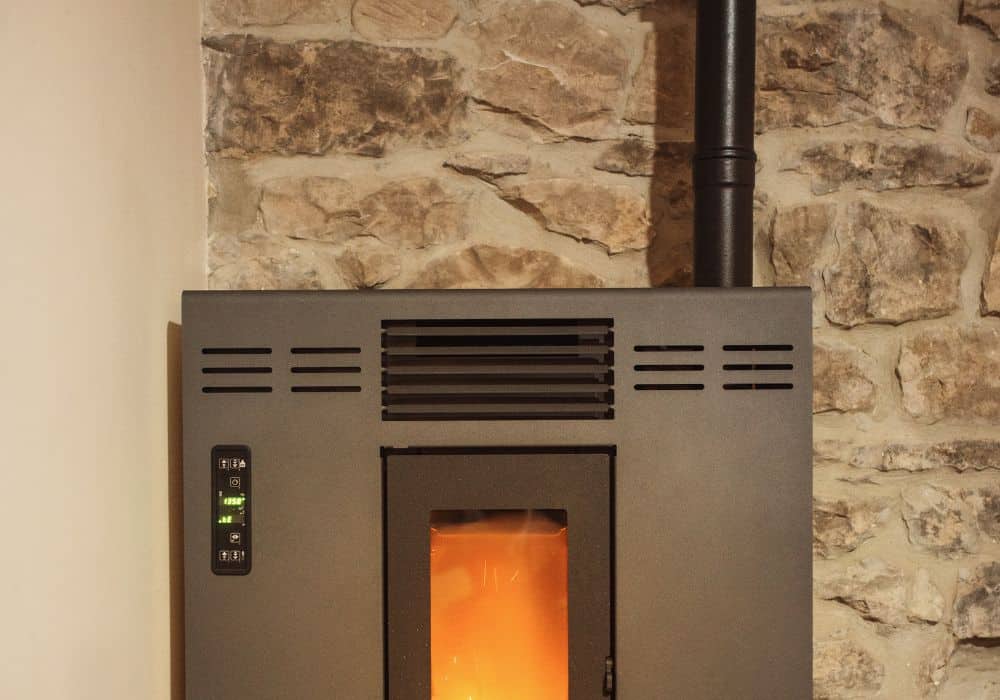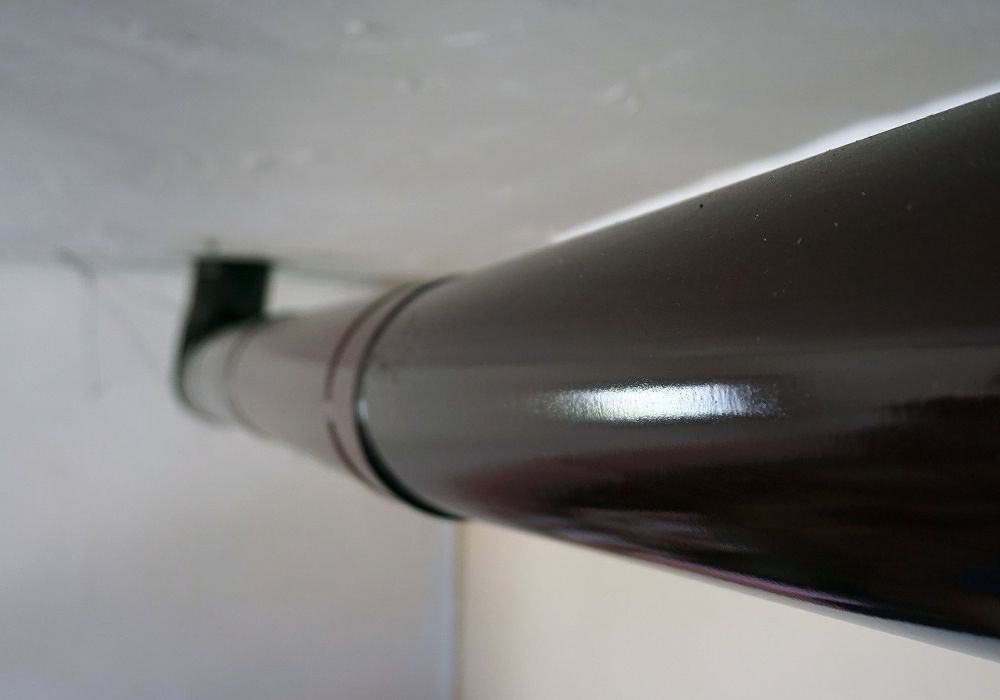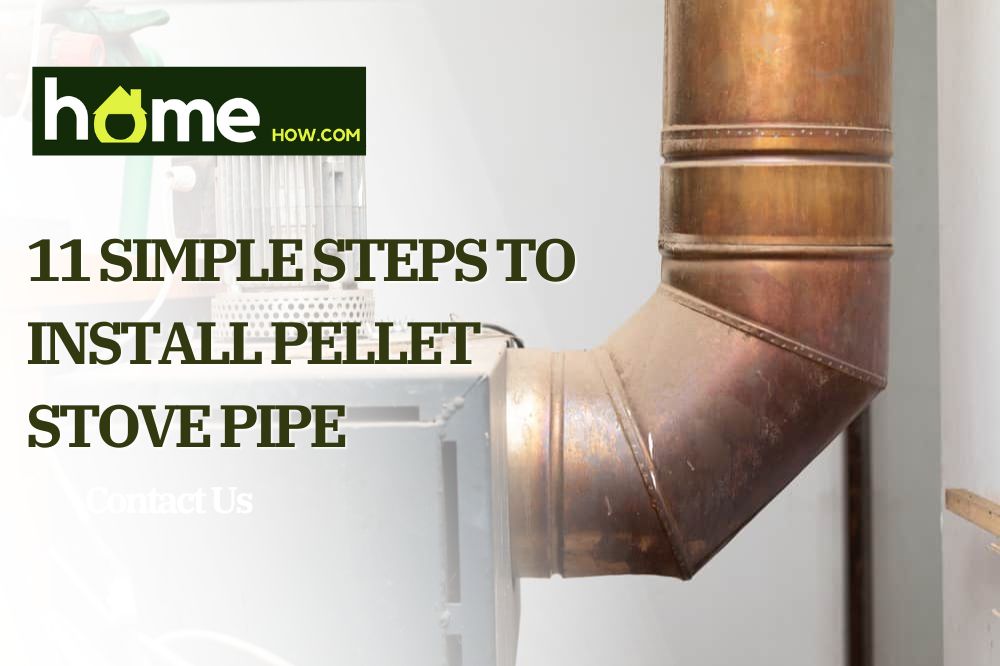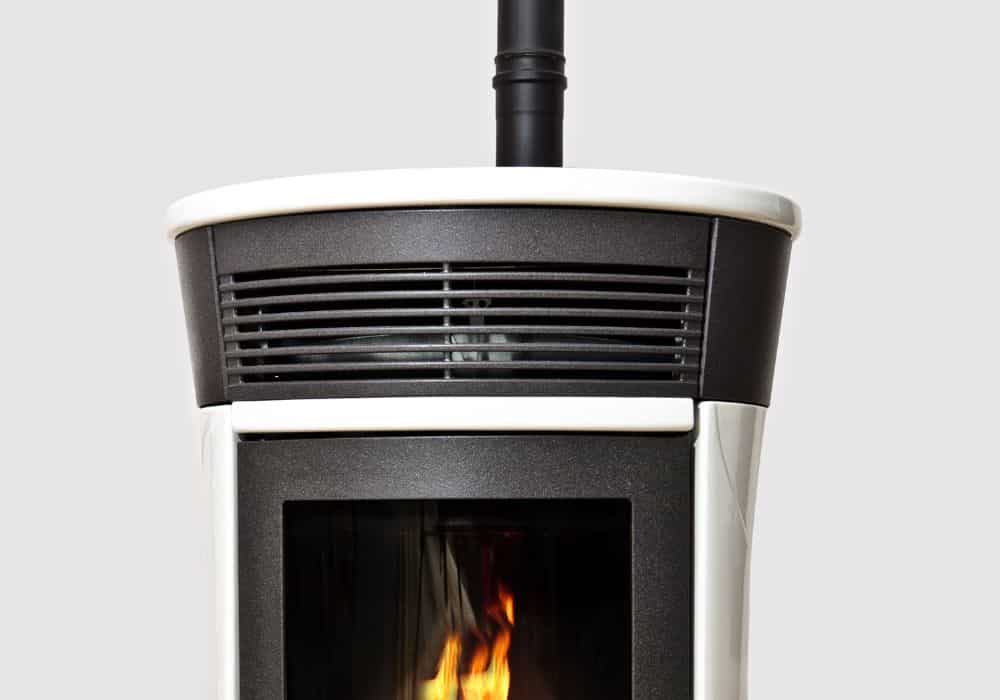With the rising cost of energy and heating your home, many people are looking for alternative ways to keep their homes warm. If you have already looked into different options, you have probably come across pellet stoves. But what are they, how do they work and how exactly do you install one in your home?
We have all the answers for you on pellet stoves, including how to install a pellet stove pipe. We also cover where in your home you should and shouldn’t install a pellet stove and its benefits.
Read on to find out all you need to know about pellet stoves and how to install them.
What is a Pellet Stove?
A pellet stove is a way to heat your home that is easy to operate and energy and cost-efficient. Compared to some other methods of home heating, they are also safer, cleaner, and better for the environment.
A wood pellet stove is a freestanding heating unit that can be used to heat a room or a whole house. They are similar looking to traditional wood stoves, but because they burn pellets rather than wood, they produce less ash and are more efficient. Pellet stoves can be used in addition to an existing heating system or as the only heat source.
When you choose a pellet stove for your home, consider the layout and size of your home to get the right size stove. If the stove is too big, it will waste fuel, while a stove that is too small will not heat the place enough. In larger homes, especially if pellet stoves are your sole heat source, you may need more than one stove.
How Pellet Stoves Work
All pellet stoves have the same components which are burn and ash pots, a hopper, a pellet feeding system, an exhaust vent, and a blower system. Some stoves require manual operation while others will come with built-in controllers.
Let’s take a look at the different parts in more detail.
- Ash pot: there is minimal ash from burning pellets. This ash is collected in a pot, making it easy to clean and dispose of.
- Auger: a feeding device. It feeds pellets from the hopper a few at a time into the combustion chamber. You get more heat output with a faster-operating auger.
- Blower: a system that pulls in cooler air from the room and moves it into the burn pot. The cooler air makes the flames strengthen and results in a more even and longer-lasting burn.
- Burn pot: where the pellets ignite and burn, creating a hot flame.
- Exhaust pipe: unlike traditional wood stoves, there is no need for a chimney system with a pellet stove. Instead, you need an exhaust pipe that connects the blower to a rooftop chimney or the outside through the wall behind the stove.
- Heat exchanger: when the stove produces heat, it travels through the exchanger to the blower and then into the room.
- Hopper: a storage unit that can hold between 35 and 130 pounds of pellets depending on the size of the stove.
- Thermostat: some stoves come with a digital control system. You can use it to control the thermostat and how many pellets are distributed from the hopper to the burner at a time.
Where to Install Your Pellet Stove?

There are several places in your home where you can install a pellet stove. These are:
- Next to an exterior wall: this setting may reduce ventilation costs as the vent can travel out through the wall. It can also help hide the vent pipe.
- Next to a stairway: placing it near your stairs will allow the heat to rise upstairs and will make your heating system more efficient.
- In an insulated basement: the idea behind putting the pellet heater in the basement is the same as having it next to your stairs. As the heat elevates, it is distributed more evenly.
Where Not to Install Your Pellet Stove?
You should not have a pellet stove in your bedroom or bathroom. First of all, it will not distribute the heat around the house because the rooms are not in the center of your home. Secondly, putting it in your bathroom is most likely against your insurance policy.
How to Install a Pellet Stove Pipe
Before you start the installation, ensure that you have all the tools and equipment you will need during the process. Here is what you will need:
- Vent pipe
- Pipe joints
- Tape measure
- Stud finder
- Reciprocating saw
- Fireproof insulation
- Silicone caulk
- Screws
Before you start, you should also enlist some helpers to help you with the installation as pellet stoves are very heavy. Once you have your tools and your helpers, you are ready to get started.
Step One
Start by choosing a suitable area for your pellet stove. It should be in an area where you can easily run a pipe from the stove to the outside of your house. Use a stud finder to check there are no obstructions where you need the pipe to go through.
Step Two
Start by installing a non-combustive, code-approved hearth pad. This pad will protect your house from sparks and embers. The pad should extend about six inches in front of the stove and the sides. Place the stove on the pad, ensuring there are adequate clearances from surfaces that are combustible.
Step Three
Measure the lengths of the pipe you need to install your pellet stove. Include the areas of the wall and the location of the vent outside.
Step Four
Purchase the pipes from a hardware store. Check the installation instructions for your stove as the manufacturer will have specified the size of the pipe you need. Ensure that you have the right lengths of pipe.
Step Five
Attach the vent pipe temporarily to the stove. Drill a pilot hole through to the outside house wall. Align the hole with the vent pipe and trace the outline of the pipe. Mark the interior wall thimble diameter into the wall.
Step Six
With a reciprocating saw, cut along the outer circle. Now remove the vent pipe and repeat the steps on the exterior wall.
Step Seven
Wrap insulation around the pipe, passing through the thimble. Press the thimble against the wall and screw it to the siding. Then attach the screen and the elbow to the vent pipe.
Step Eight
Next, you need to make a hole for the fresh-air intake vent. This should be about two and a half inches wide and about twelve inches away from the exhaust pipe. Drill holes on both internal and external walls.
Step Nine
Feed an aluminum intake vent with about a two-inch diameter from the outside in and screw the flange mounting to the siding. Apply silicone caulk around the vent where it enters into the house. Place the mounting plate against the wall and use four screws to secure it.
Step Ten
Use silicone caulk that can withstand high heat to seal the vent pipe connections. Connect the exhaust pipe and intake vent to the back of the stove. With an elbow attached to the exhaust pipe, connect it to the wall thimble on the inside wall.
Step Eleven
Plug in the power cord for the stove and fill the hopper with pellets. Check the stove pipe is operating correctly.
You can watch this video to see what the installation of a pellet stove looks like in practice.
Can You Install a Pellet Stove Into a Fireplace Opening?
Yes, it is possible to install a pellet stove into a masonry fireplace. You will need to start by clearing out all debris from the fireplace. You also need to move the damper as this is not required when using a pellet stove.
When you are using your fireplace for the pellet stove, there is no need to drill holes in your walls because you can use the existing chimney to exhaust fumes from the stove. However, to use the chimney for the stove, you need to install a chimney liner which will take the fumes out of the house.
Once the chimney liner is in place, you need to install an adapter between the chimney liner and the exhaust port of your stove. You also need to cover the liner coming out of the chimney with a cap. This will prevent debris from the outside entering your vent or stove.

Benefits of Pellet Stoves
Pellet stoves are very efficient, with an EPA-certified unit having a heating efficiency of 70-83%. They are affordable, pellet stove installation is cheaper than wood stoves, and some places, for example, in the United States offer tax rebates on pellet stoves.
There is very little ash or buildup, which makes them safer than wood stoves where buildup can cause blockages and fires. Ash from pellets can be used as fertilizer or in architectural materials. Many people consider pellet stoves to be carbon-neutral as the pellets are made from recycled biomass such as sawdust or wood waste.
Conclusion
A pellet stove can be an efficient, low-cost way to heat your home. A pellet stove is cheaper to install than a traditional wood stove and they are more environmentally friendly.
Pellet stoves are not difficult to install. However, you might like to consult a professional installer regarding the best place for the stove in your home, even when installing it yourself.
We hope to have cleared all your questions about how to install a pellet stove pipe. Should you have other questions on the topic, you can write them in the comments section.

